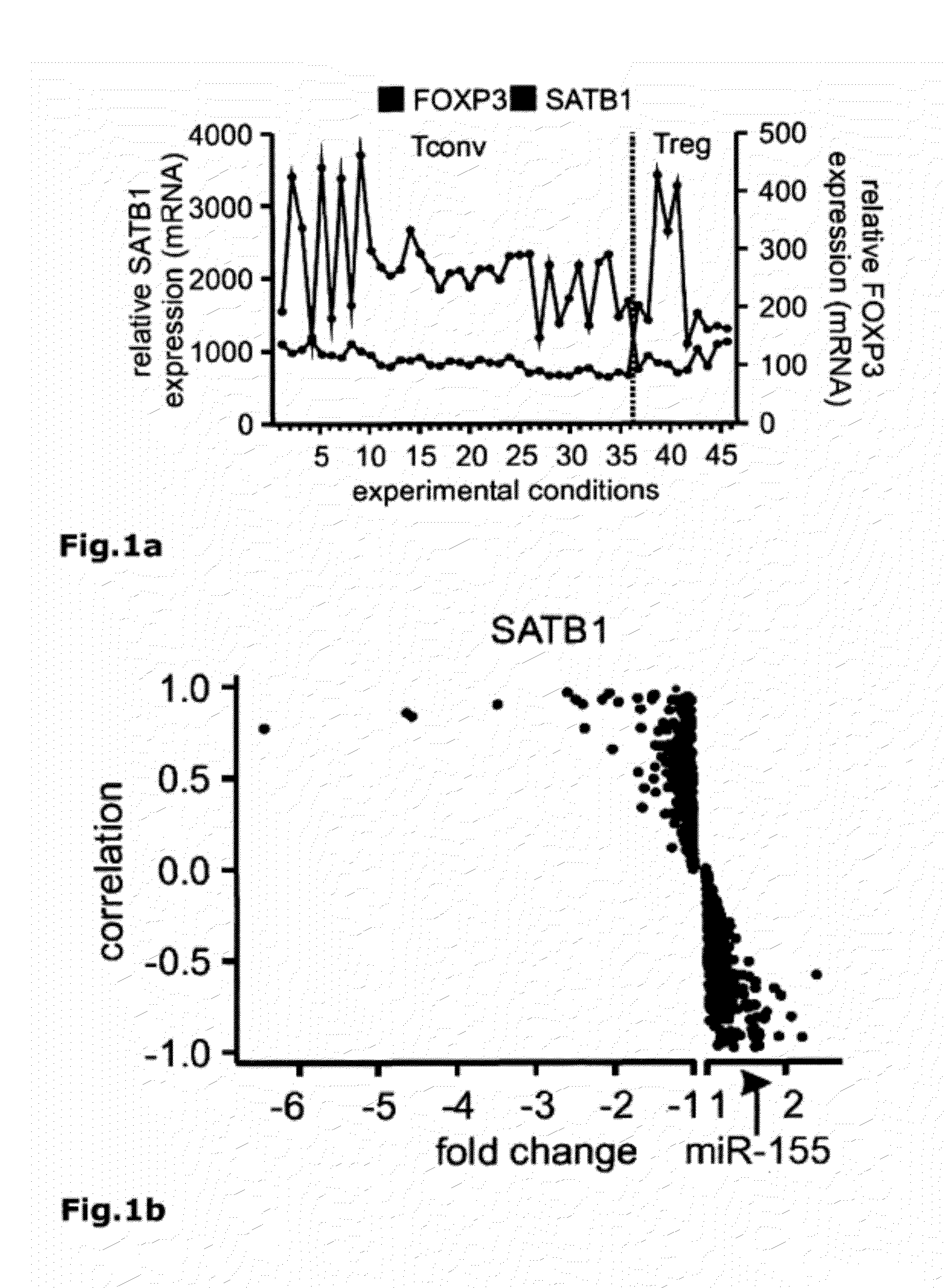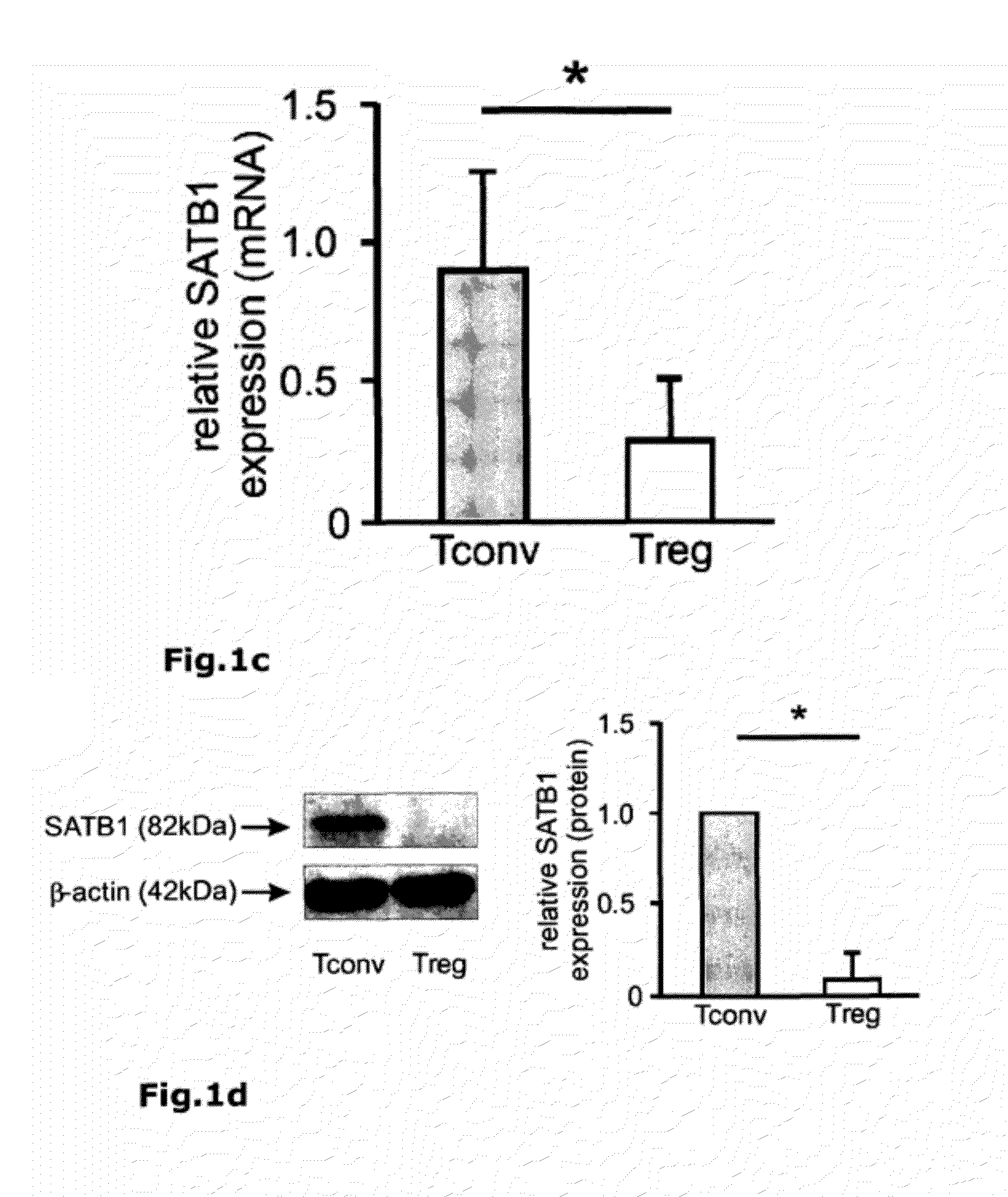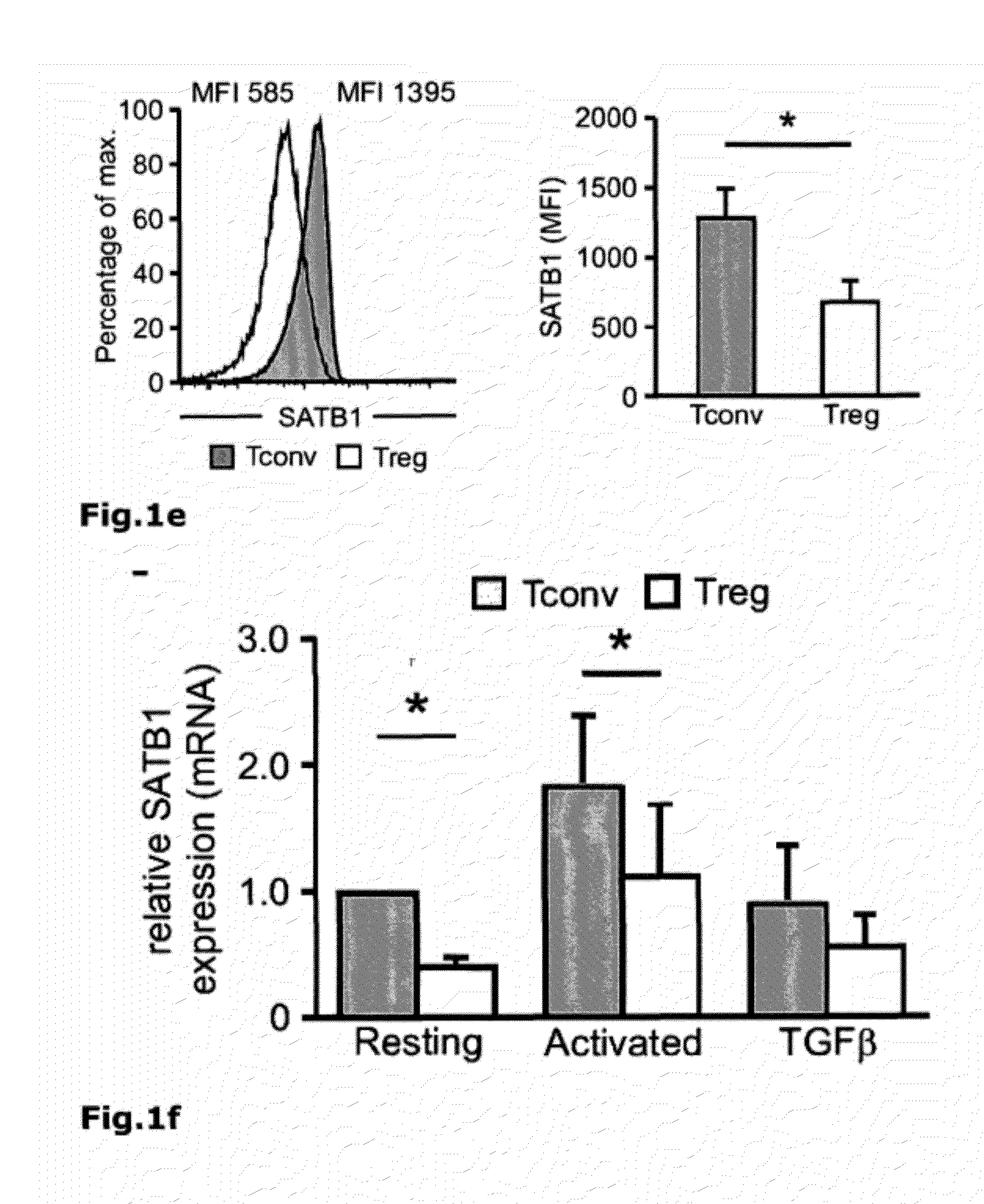Identification of regulatory t cells via the global gene regulator satb1
a technology of global gene regulator and t cell, applied in the field of identification of regulatory t cells via global gene regulator satb1, can solve the problems of loss of suppressive function and gain of tsub>effector /sub>function, and achieve low to absent trimethylation, low methylation, and high h3k4 methylation.
- Summary
- Abstract
- Description
- Claims
- Application Information
AI Technical Summary
Benefits of technology
Problems solved by technology
Method used
Image
Examples
example 1
[0071]To identify regulatory circuits involved in FOXP3-mediated inhibition of Teffector cell differentiation a large transcriptome experiment was initiated comprising 171 individual samples in 48 experimental conditions of human resting or activated conventional FOXP3− CD25− T cells (Tconv) and natural regulatory CD25+ FOXP3+ T cells (nTreg) (FIG. 6 and Table 1). Since miRNA represent an additional level of gene regulation we performed microRNA (miRNA) profiling of 753 human miRNAs in Treg versus Tconv allowing us to calculate inverse correlations between gene expression and miRNA expression (total of 35×106 correlations). Genes were filtered 1) by their differential expression between Treg and Tconv samples, 2) by a significant inverse correlation between gene expression and those microRNAs significantly enriched in Treg, and 3) by their gene ontology associated with e.g. transcriptional regulation, DNA methylation or histone modification. Of the 47 genes differentially expressed ...
example 2
[0079]To identify regulatory circuits involved in FOXP3-mediated inhibition of Teffector differentiation, whole transcriptome analysis of human resting or activated conventional FOXP3− CD25− T cells (Tconv) and natural regulatory CD25+ FOXP3+ T cells (nTreg) was performed (FIG. 25 and Table 1). Of the 47 genes specifically differentiating between Treg and Tconv, special AT-rich sequence-binding protein 1 (SATB1) (FIG. 21a) was among the genes that were always expressed at significantly lower levels in Treg compared to Tconv. Re-assessment of transcriptome data from previous reports confirmed our observation of SATB1 to be a potential target of FOXP3-mediated repression (Pfoertner, S. et al., Genome Biol 7, R54 (2006); Zheng, Y. et al., Nature 445, 936-940 (2007); Sugimoto, N. et al., Int Immunol 18, 1197-1209 (2006)).
[0080]SATB1 is a transcription factor and chromatin organizer essential for controlling a large number of genes participating in T-cell development and activation (Alva...
PUM
| Property | Measurement | Unit |
|---|---|---|
| diagnostic composition | aaaaa | aaaaa |
| degree of plasticity | aaaaa | aaaaa |
| functional plasticity | aaaaa | aaaaa |
Abstract
Description
Claims
Application Information
 Login to View More
Login to View More - R&D
- Intellectual Property
- Life Sciences
- Materials
- Tech Scout
- Unparalleled Data Quality
- Higher Quality Content
- 60% Fewer Hallucinations
Browse by: Latest US Patents, China's latest patents, Technical Efficacy Thesaurus, Application Domain, Technology Topic, Popular Technical Reports.
© 2025 PatSnap. All rights reserved.Legal|Privacy policy|Modern Slavery Act Transparency Statement|Sitemap|About US| Contact US: help@patsnap.com



